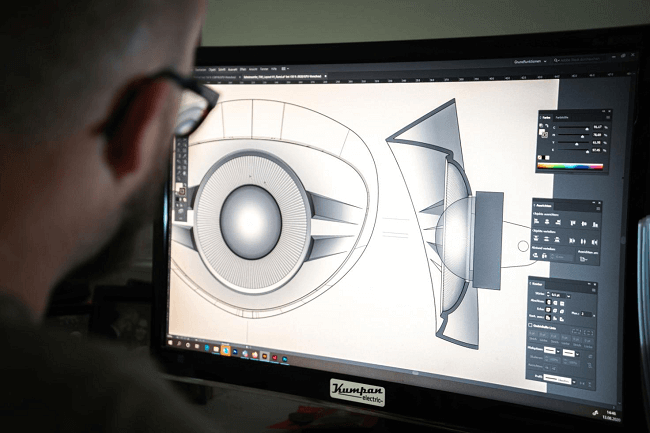United States
Fine Arts

"Fine art is that in which the hand, the head, and the heart of man go together. "
-John Ruskin
‘Fine Arts’ is a term that refers to art forms developed solely for its aesthetic and beauty rather than its utility. Fine Arts as a course focuses on learning art forms and creating objects on the basis of concepts and ideas.
The term encompasses activities such as designing, sculpting, dance, drama, music, pottery, painting and many such artistic pursuits.
Fine Arts is apt for all those who have an extremely creative and imaginative mind,
People in these artistic fields are mostly not driven by monetary rewards, and making it big is often a long drawn process, but once they do achieve success it can bring immense popularity and financial benefits.
This field helps in personal growth and expression of one’s self.
Some skeptics argue the need for a degree in this field, but the reality is that there is much to learn in this field, and therefore, the need of a degree.
Careers in Fine Arts

A student’s career options are entirely dependent on one’s own interests and likings. An expert in fine arts can search for employment in any company looking to fill a related role in a particular department.
-
Art therapist- Art therapists conduct sessions or programs to improve their clients' physical, emotional, or cognitive well-being.
-
Set designer- Design sets and backdrops for film, television, ads, and theater. Often have to study the script and research to determine appropriate architectural and interior styles to give credibility to the story.
-
Animator- Animators create special effects, and the illusion of movement to visual images using film, video, computers, and other media for the creation of computer games, movies, music videos, and commercials. Most of the blockbusters these days are a product of excellent animations and 3D effects.
-
Graphic Designer- No matter how good the product, if it is not presented well, there will be no takers for it. Graphic designers assemble images, typography or graphics to create promotional and commercial kits such as logos, displays and packaging etc.
-
Art Directors – Art directors are the backbone of the advertising industry and are involved in the art and layout designs for print and broadcast media.
-
Art/Drama/Music Professors – Instructors and professors involved in the teaching of fine and applied arts.
-
Photographers – Photography these days covers a huge field of expertise. Individuals may specialize in forms such as landscapes, wedding, aerial, portraits, wildlife, product or merchandizing etc. Also includes photojournalism.
My love of fine art increased - the more of it I saw, the more of it I wanted to see.
- J. Paul Getty
Fine Arts Courses
A bachelor’s course can be pursued after completing 12th grade from a recognized board. Few institutes require a qualification of an aptitude test. For a post graduate program, a graduate degree in the same field is necessary.
There are several institutions that offer various certificates, diploma and degree level courses. The duration of the courses varies from 1 to 5 years depending on the art form of choice.
-
Diploma Course in Fine Arts: Diploma in Fine Arts is a program in the field of arts and related domains. Candidates follow the course after completing their 10+2 education. On the basis of their performance in the class 10th board examination, some institutes also give these courses to class 10th applicants.
Duration: 1 year course to be pursued after 12th grade.
-
Undergraduate Course
-Bachelor of Fine Arts (B.F.A.) or Bachelor of Visual Arts (B.V.A.): The Bachelor of Fine Arts, or BFA, is an undergraduate degree program that focuses on the visual and performing arts. The course is also known as Bachelor of Visual Arts (BVA), and the study of Visual Arts involves subjects like painting, sculpture, photography, literature, animation, and so on.
Duration: 4-5 Years
-Bachelor of Arts in Fine Arts (B.A.):The concepts of various types of performing arts, such as painting, sculpture, architecture, music, and poetry, that are created primarily for aesthetics or beauty rather than a commercial application, are typically covered in BA Fine Arts subjects.
Duration: 3 Years
-
Postgraduate Course
-Master of Fine Arts (M.F.A.) or Master in Visual Arts (M.V.A.): To be eligible for a Masters of Fine Arts (MFA) or a Masters in Visual Arts (BVA) program , students must first complete a Bachelor of Fine Arts (BFA) or a Bachelor of Visual Arts (BVA) degree. Painting, applied arts, and sculpture are the three broad disciplines that can be pursued as specialization.
Duration: 2 Years
-Master of Arts in Fine Arts (M.A.): Candidates must have earned a Bachelor's degree (preferably in the arts) or its equivalent (10+2+3 or 10+2+4) of at least three or four years. MA is a comprehensive curriculum that provides students with in-depth knowledge of the discipline they have chosen. One can do M.A. in English, French, German, Chinese, Economics, Political science, History, Politics etc.
Duration: 2 Years
Apart from the general Fine Arts degree, there are diplomas and certifications that individuals can pursue in their own specialized fields while undertaking other courses. These may include courses in Photography, Music (vocal and instrumental) or Dance, Script Writing, Graphic Designing, Acting and Film Technology, Sketching and Oil painting, Animations etc.
Top colleges that offer Undergraduate and Postgraduate courses in Fine Arts
-
Northeastern Illinois University, USA
-
University of New South Wales, Australia
-
University of Auckland, New Zealand
-
Newcastle University, UK
-
University of Southampton, UK
Qualities Required in Fine Arts Students
-
Communication skills
-
Presentation skills
-
Drawing skills
-
Sketching skills
-
Imaginative mind
-
Artistic skills
-
Patience
-
Visualization skills
-
Proper use of tools required in selected field
-
Basic knowledge of digital media
-
Problem solving skills
-
Understanding of color theory and combinations
And most importantly,
-
Creativity
Recipe for Success in a Creative Job
You’ve read through the list of careers in art, qualities required and admission process and should have a good insight on the course and its details.
Having an online portfolio is almost as important as having the degree itself. Building a website for showcasing your portfolio will help you show off your talent to potential clients, employers and collaborators and will make it much easier for you to land a job you have your eye on.
Your portfolio has to look right, so make sure to spend time on making it perfect. By now you should have a better idea on what to do with an Arts degree and what path to choose from there on. A fine arts degree is valuable and provides a wide range of jobs and knowledge that will help you succeed.
FREE COURSES
The below courses provide a good overview on the study area
- Crash Course Theater and Drama on thecrashcourse.com
- Building Your Career in Music: Developing a Brand and Funding on edX.org
- Artistic Research in Music – an Introduction on edX.org
- ART of the MOOC: Public Art and Pedagogy on Coursera
- Modern Art & Ideas on Coursera
- What Is Contemporary Art? on Coursera
- The Art of Vocal Production on Coursera
An introduction is provided in the below video
Frequently Asked Questions
Let’s take a look at some commonly asked questions by students.
Art history includes research and reading other artists' work and writing papers about it. Whereas a fine arts degree allows you to produce your own creative piece of work. It is up to you which field is suitable and interesting for you.
For brand awareness, product promotion, and ultimately persuading the customers, some visually communicating designed pages such as logos, pamphlets, brochures and website must be highly useful in marketing, web designing, and advertising sectors for which graphic designers are the spine of such successful businesses.

